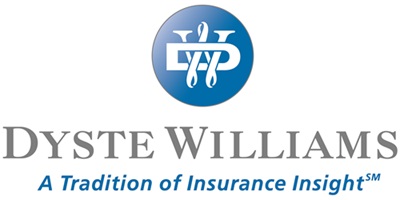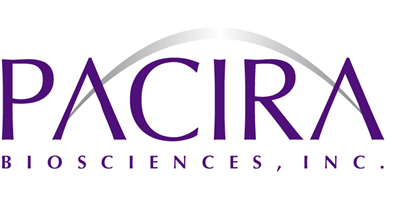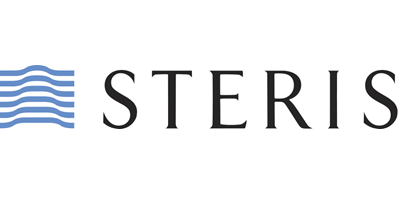Protecting Your Practice from Cyber Threats
In today’s digital age, healthcare organizations are increasingly targeted by cyber threats. The statistics from Travelers' 2023 Risk Index reflect a sobering reality for many businesses, particularly in the healthcare sector. With 54% of business decision-makers believing that a cyberattack is inevitable, organizations need to adopt an initiative-taking and comprehensive approach to cybersecurity.
Top five cyber events
Recently, ransomware attackers have become more aggressive, asking businesses to pay six, seven and even eight-figure ransoms. These criminals are deleting backups, and in some cases, threatening to disclose sensitive or confidential data, making it harder for businesses to recover from such an attack.
A security breach continues to be the most frequently cited cyber event, followed by a system glitch causing an organizations’ computer to go down, employees putting information/systems at risk, theft, or loss of control of customer or client records and a company being the target of cyber extortion/ransomware.
Effective measures that have been proven to reduce the risk of becoming a cyber victim are available, but not enough companies are acting. In fact, businesses of all sizes are overconfident in navigating the evolving cyber landscape, which may cause a false sense of security.
Here’s how healthcare facilities can prepare for and mitigate the risk of a cyberattack:
Understanding the Risk
- Recognize the Predictability of Attacks: Cybercriminals often exploit common vulnerabilities and target industries with high-value data. For healthcare facilities, patient records, personal information, and billing details make them attractive targets.
- Identify Potential Vulnerabilities: Regularly conduct security assessments to identify and address weaknesses in your systems. These vulnerabilities can include outdated software, inadequate access controls, or untrained staff.
Strategic Cybersecurity Measures
- Strengthen Access Controls: Implement multi-factor authentication and ensure that only necessary personnel have access to sensitive data. Regularly review and update access permissions.
- Enhance Network Security: Deploy firewalls, intrusion detection systems, and encryption to protect data both in transit and at rest. Use advanced threat detection and response tools to identify and neutralize threats quickly.
- Regularly Update Systems: Keep all software and systems up to date with the latest security patches to protect against known vulnerabilities.
- Invest in Cybersecurity Training: Train employees to recognize phishing attempts, avoid suspicious links, and adhere to best practices for data protection. Regular training can help reduce human errors that lead to breaches.
- Develop an Incident Response Plan: Create a comprehensive plan detailing how to respond to a cyberattack. This should include steps for containment, communication, and recovery. Regularly test and update the plan to ensure its effectiveness.
- Backup Data Regularly: Implement a robust data backup strategy to ensure that you can quickly recover data in the event of a ransomware attack or system failure. Store backups securely and regularly test the recovery process.
- Monitor and Audit: Continuously monitor your network for suspicious activity and conduct regular security audits to ensure compliance with best practices and regulatory requirements.
Cyber insurance is increasingly important
Cyber liability insurance can be a crucial safeguard against the potentially devastating financial consequences of a cyberattack by helping cover costs associated with data breaches and cyberattacks on your healthcare facility. Those costs can include such things as lost income due to a cyber event, costs associated with notifying patients affected by a breach, costs for recovering compromised data, costs for repairing damaged computer systems and more.
Learn more at the 2024 MNASCA Annual Conference
Cybersecurity is an ongoing effort that requires vigilance and adaptation. By recognizing the inevitability of cyber threats and taking proactive steps to address vulnerabilities, healthcare organizations can better protect themselves and their patients. Prioritizing cybersecurity measures not only helps in preventing attacks but also ensures a quicker recovery if a breach does occur.
At the 2024 MNASCA Annual Conference, MNASCA Business Partner, Dyste Williams, led a panel discussion delving into recent cyber events within the health care sector. Panelists shared insights to help ASC leaders gain a better understanding of the nature and impact of these threats. Check out the resources from this educational session:
Tales From the (En)Crypt: Protecting Your Practice from Cyber Threats
Participating Moderator: Nels Dyste, Vice President, Dyste Williams
Panelists:
Eric Senst, Director of Sales, Booyna Systems
Michele C.S. Lange, Esq., CIPP/US, Managing Director & Counsel, Company Employee Adjuster, Travelers
AEU Category: Financial/Regulatory and Legal Issues
In today’s digital age, healthcare organizations are increasingly targeted by cyber threats. While it may feel like a scene from a horror movie, there are concrete steps that ASCs can take to defend themselves against cyber incidents. Delve into recent cyber events within the health care sector to understand the nature and impact of these threats and gain insights about how to respond if your center or clinic experiences a cyber-attack. Join us for this panel discussion to discover tangible tips to protect patient data, maintain continuity of care, and stay ahead of evolving cyber threats.
Learning Objectives:
- Investigate the current cyber threat landscape, trends, and recent events that have impacted the healthcare sector
- Explore top security tips to better secure your ASC
- Learn how cyber claims are handled and what is being done to help prevent them
- Find out what to do if you experience a breach
Resources:
 
|













